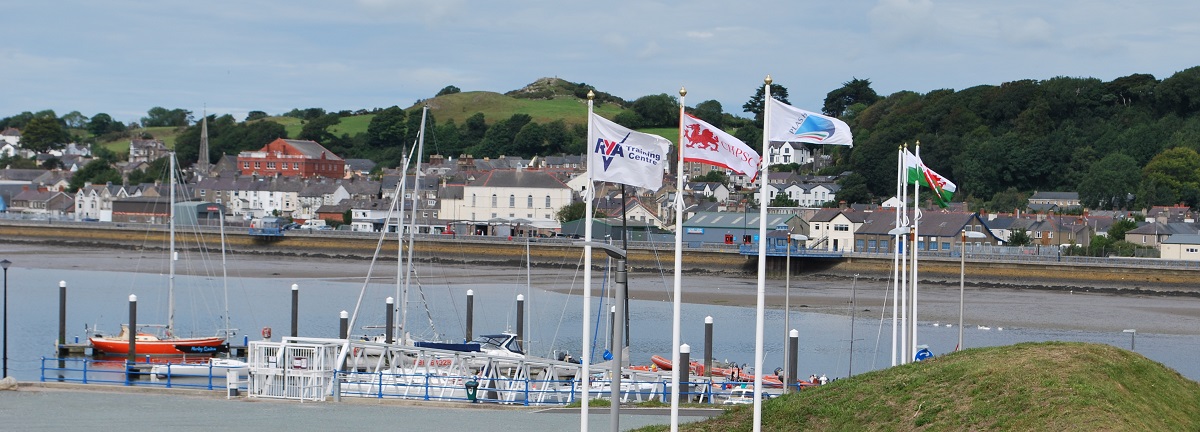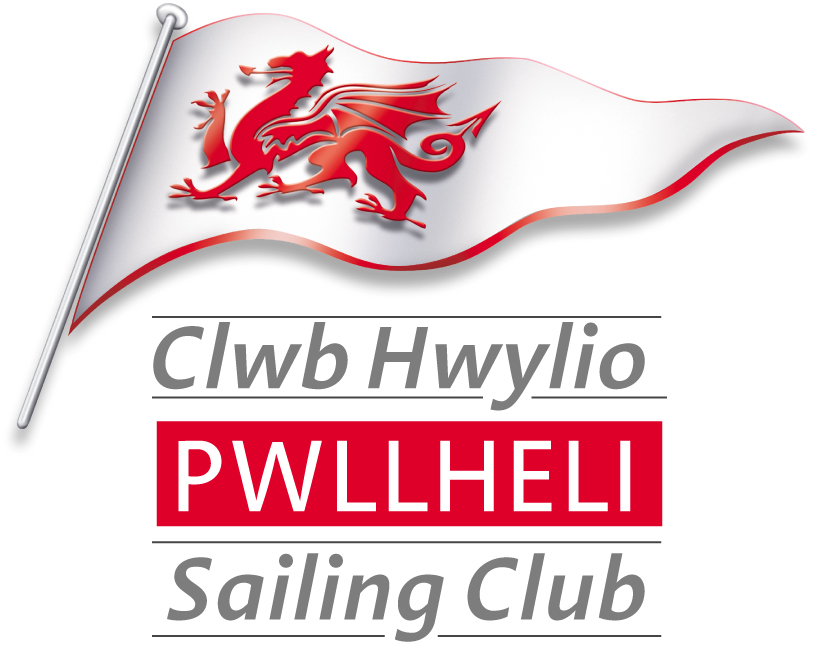 Flag Officers Introduction and News
Flag Officers Introduction and News
Croeso / Welcome to this week's club newsletter.
The Flag Officers can report that membership renewals are flowing in, and this enables us to budget and plan our expenditure, propose and underwrite activities both on and off the water, and of course meet our facility fee payment to Plas Heli, and affiliation to the RYA
Some expenditure is earmarked to improve member experience, such as the new TV which belongs to the club, improved dinghy parking, and upgrades to the Protector rib, which will be available for members who wish to help out with events to obtain the necessary RYA qualifications at much reduced costs.
The Cruising section is being given a fresh impetus by Stephen Williams and Rob Smith who have proposed a list of enticing Cruising activities for all members of the club, whatever their boating interests. More information in the "Cruising" section of the club website here , and in the Cruising section of the newsletter below. The Protector Rib will be available at cost for some of the local activities, such as the Porthmadog trip with a suitably qualified skipper.
Work continues on essential maintenance, upgrading of fences and landscaping and a programme of safety boat servicing has started. The event pontoons are scheduled to have an electrical "makeover" and are being jet washed - many thanks to the volunteers (see more about the pontoons in the Plas Heli section of this e-newsletter below)
Last Friday's announcement that outdoor sport activities can resume by up to four people from two households was great news and enables a return to the activity we love. We now look forward to further easing of restrictions in next announcement, scheduled for April 1st. Then, on April 12th we can welcome our members from across the border when travel restrictions in England are eased. For now, however, boating is restricted to those residing within 5 miles or so of their boat. See RYA CW guidance here
We send our congratulations to Port Dinorwic Sailing Club / Clwb Hwylio Y Felinheli who have been crowned RYA and Yachts & Yachting Club of the Year 2021. Gwych! Fantastic!
We are all looking forward to hospitality restrictions easing, and being able to use all of our fantastic facilities and enjoying a refreshment in the bar/café with its stunning views of Cardigan bay and Snowdonia.
Cadwch yn ddiogel ac yn iach - Stay safe and well.
Webcam
The club has a webcam mounted on the Plas Heli Bridge, and the live images can be viewed here, or at the bottom of the website home page.
An additional webcam will be installed later this year looking over the Plas Heli event pontoons and northern end of the marina and will be streamed in the member's area of the club website.
Welsh Government Alert Level 4
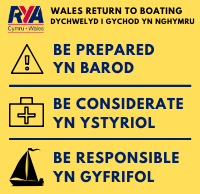
Stay local - with outdoor sport allowed by up to four people (max 2 households)
The Plas Heli compound and event pontoons are now open.
Next update 1st April
Latest RYA Cymru Wales Q & A clarifying the announcement of March 12th is here
RYA News
Trading Boats between UK and the EU - news article here
BREXIT - RYA Guidance
Border force (customs) requirements for recreational boats leaving UK waters (for example visiting Ireland) are listed here with links to the forms etc
Gorsaf Bad Achub Pwllheli Lifeboat Station
On water training started last week, with the visit of the relief Shannon, it was fantastic seeing this incredible boat being put through its paces by our dedicated local crew.
Andy Green commented " A mega impressive bit of kit, with the boat pumping three tons of water through the jet drives every second at 30 kts, and able to stop in one boat length, and stop, turn 180 degrees and reverse back in two - incredible"
Andy took time to take a few photos (credit Andy Green/RNLI)



Training also continues with the relief Shannon and the SLARS unit, with Lyndsay Harold capturing a couple of great images this week
CRUISING
2021 PLANS - UPDATE FROM ROB SMITH & STEPHEN WILLIAMS
The latest cruising news is in the cruising section of the club web site here, and reproduced below:
There is still uncertainty regarding covid but hoping for further easing of restrictions that will allow organised activity.
Towards the end of last season we saw more cruising boats participating in racing and let’s hope that continues. We will be aiming to tailor more races for cruising boats with shorter simpler courses but centred upon just having fun on the water
We are also hoping to have a varied and interesting programme of events for all boats including Ribs and power. Ideas so far are:-
> Cruise and overnight stay at Porthdinllaen
> Day cruise in Cardigan Bay and early evening drinks at the Warren Beach Bar
> Lunch trip on RIBs to Porthmadog
> Cruise and overnight stay at Aberdaron – supper in the pub?
> Cruise and 2 night stay at Aberystwyth
> Cruise and stay at Greystones linking to ISORA. Possible involvement of Greystones Yacht Club and North Sails
Any other suggestions gratefully received - please email Rob and Stephen at:
A "WhatsApp" group to enable cruisers to discuss plans etc has been set up - email Rob or Stephen with your mobile phone number to join, or use the QR code below.

CRUISING - INFORMATION -ANTIFOULING
Antifouling is simply an underwater hull paint applied to the outboard layer of a boat. Its purpose is to slow down the growth of subaquatic organisms which, over time, attach themselves to the hull. This has a detrimental effect on both the durability and the performance of the craft. The thickness of paint on your boat’s hull will build up over a few years necessitating it be stripped back to the bare hull. It is recommended to do this every four or five years.
Antifouling is one of the most dreaded maintenance tasks faced by a yachtsman. It can seem a daunting prospect and the range of antifoul products on the market can be overwhelming. However, don’t be put off, as the more antifouling coats there are on the hull the easier it is to strip back and remove. In this guide, we’ll walk you through the basic stages of antifouling your hull but first…
Types of Antifoul
There are three basic types of antifouling available, hard, eroding and copper.
Hard Antifoul
This is the basic and original type of antifouling. When wet it is hard enough to withstand wipe downs with a sponge or soft cloth without any substantial paint removal. Although abrasive in the water, hard antifoul does not wear away to any great degree. However, after a few seasons you are eventually faced with the prospect of stripping back the build-up of the hard antifoul as it becomes structurally unsound after multiple applications. Hard antifoul is ideal for high performance craft that are used frequently. Fresh water moored boats are also suitable for this type of antifoul.
Eroding Antifoul
As the name suggests, eroding antifoul wears away until you are left with no protection on your hull. In theory, if there is antifoul on your hull it’s protected. However, this does not happen with the new generation of paints because as the paint film thins, the biocides are washed out leaving effectively a bare surface. The paint works by using the water’s friction to remove the thickness of the paint thus exposing fresh layers of biocide.
Copper-based
These use copper particles suspended in an epoxy coating. Long lasting, up to 10 years, but the most expensive of the three.
Each boat manufacturer will recommend which antifouling paint is suitable for each type of boat.
Does my boat need antifouling?
The first thing to do is to examine your hull closely. Any eroding antifoul should have removed most of itself from the hull. Look for signs of the following:
- Craters. The hull should be of a smooth appearance and not resemble the moon’s surface
- Flaking. Paint that has peeled off and left rough edges
- Blisters. Where water has become trapped between the paint and the hull
If your hull shows any of these signs then it’s probably time to antifoul.
Safety
There’s no getting around the fact that antifouling is a dirty job. It’s also extremely hazardous if you don’t take health and safety seriously. Full protective clothing, including an effective face mask and goggles, are essential. Antifouling dust is poisonous and a simple decorator’s mask will not suffice. Wear safety equipment throughout the antifouling process.
Step 1. Preparation
As soon as your boat is ashore the hull should be pressure washed to remove any existing fouling. It is often advisable to use a degreaser at this point. Any areas of flaking or loose paint can be scraped off. If many layers have built up and/or there are any large areas where it has adhered poorly, it is best to strip the hull right back to a sound surface. There are three basic methods of preparing the hull for antifouling;
DIY scraping. The cheapest method but very labour intensive. Ensure the scraping blades used are sharp and round off any corners with a file to avoid digging into the hull.
Chemical stripping. Quicker than scraping but ensure you are using the correct products for use on GRP. A non-compliant paint stripper will cause damage to the hull. You may need several applications depending on the thickness of paint being removed. Chemical strippers can get messy.
DIY soda blasting. The least labour intensive but most expensive method. Many sailors prefer to leave this to the professionals but it can be carried out by the competent DIYer. It is possible to buy soda “pots” and hire a suitable compressor and do your own blasting.
The first task is to mark out where the waterline is on your hull. Make a mark with a chinagraph pencil whilst the craft is still afloat. In some cases, there will be a waterline stain on the hull to indicate the waterline. Make a mark a couple of inches higher than the waterline mark to allow for a loaded boat and a full fuel tank. Make several marks along the hull and draw a line connecting them up with a straight edge. Using good quality masking tape, mark the line along the entire length of the hull.
Next, you need to key the surface to enable the paint to adhere to the hull. Use a coarse grade of wet/dry sandpaper, 40-60 grit, and plenty of warm water and sand the entire area you are painting. As soon as the sandpaper loses bite, rinse or replace it. To save time, use an electric sander for larger areas.
If you are sanding the surface right back to a bare hull then you will need to prime the surface.
Step2. Priming
Priming ensures that the antifoul adheres properly to the hull. Ensure the primer you are intending to use is compatible with your chosen antifoul. It’s worth thinning the primer down by around 10% as it makes it go on a little easier and will cure faster. Use a medium-sized paint roller and gently apply the primer paint to the prepared hull. Paint right up to your masking taped line taking care not to paint above it. Leave the paint to cure completely as per the manufacturer’s guidelines.
Step 3. Antifouling
Apply the antifouling paint once the primer has dried thoroughly. Apply the paint lightly and evenly. Pay particular attention to areas you would expect to have greater wear such as leading edges, keel, etc. These areas may require an extra coat of paint. Sunlit areas of the hull will attract more marine growth than darker areas underneath and may also require an extra coat. In general, two coats of antifoul are to be recommended. Don’t attempt to try and stretch the paint out as the more biocide you have on the hull the better the protection achieved. Keep stirring your paint throughout the process as up to 50% of the antifoul is solid content and will settle to the bottom of the can when left.
A medium pile paint roller with an extension handle is the easiest way of applying the paint. Keep any zinc sacrificial hull or shaft anodes clear of any paint as this could damage their performance. Ideally, you want to be painting in the late morning or early afternoon on a dry day. If the air temperature is cooler then keep your tin of paint in a warm place to ensure it flows smoothly. Don’t be tempted to mix batches of paint. Apply the paint logically so you can see where you’ve painted and where you haven’t. One method is to mark the area at one-foot intervals with chalk, which you can paint over and will always know where you’ve got to. If your boat is supported on cradle pads, just paint up to them and once dry, ask the boatyard to move them onto a painted area and treat accordingly. Another option is to paint these areas whilst the boat is still in the lifting slings.
Tips for painting
- Remove the masking tape as soon as the paint has turned tacky.
- Don’t be too vigorous with your brush strokes, it may disturb the primer.
- Use a rag and thinners to remove any splashes or drips.
No antifouling will keep your boat 100% slime free but the good news is, the more you use your boat the better the antifoul will perform. Richard Jerram of International Paints explains, “Antifouling paint always works best when the boat is well used as they are developed to work when in motion. So, if you want a completely clean hull then choose the most appropriate antifouling and get out onto the water. Do you really need an excuse?
Article courtesy of www.rightboat.com
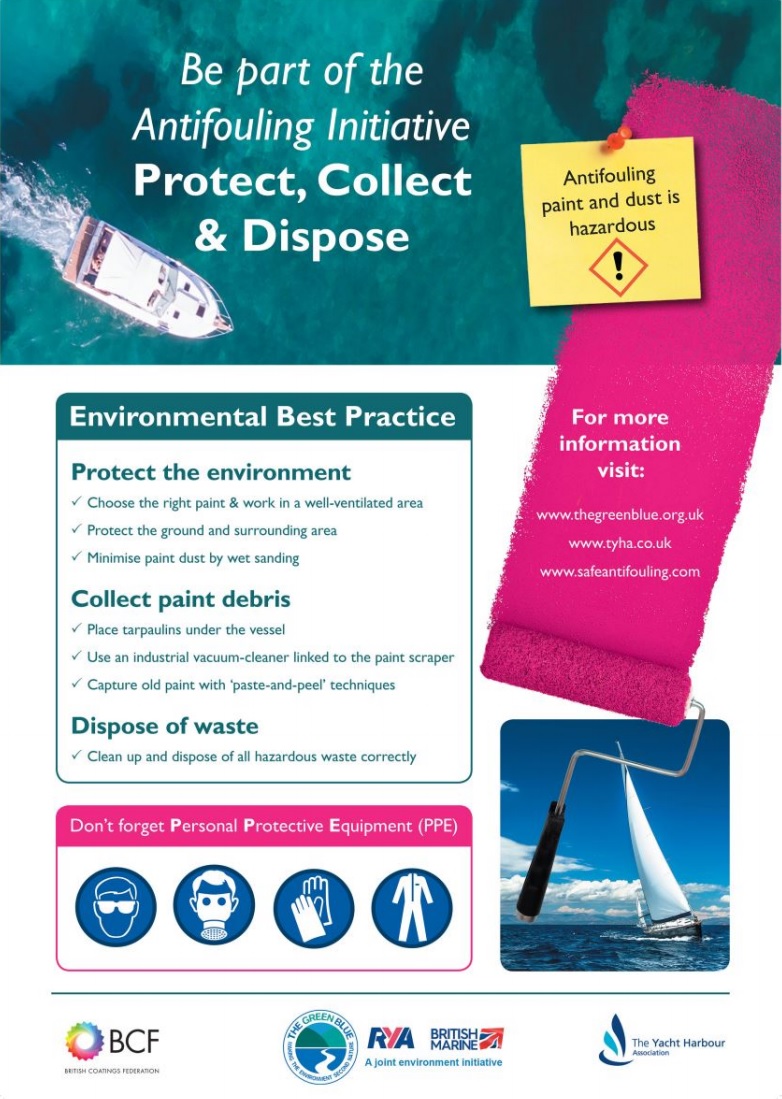
BACK TO THE WATER - BOAT HANDLING VIDEOS
Instructional Video 1- "springing off'' when pinned on a pontoon
CHPSC: AGM
COPY OF THE NOTICE OF AGM ISSUED ON 19TH FEBRUARY 2021
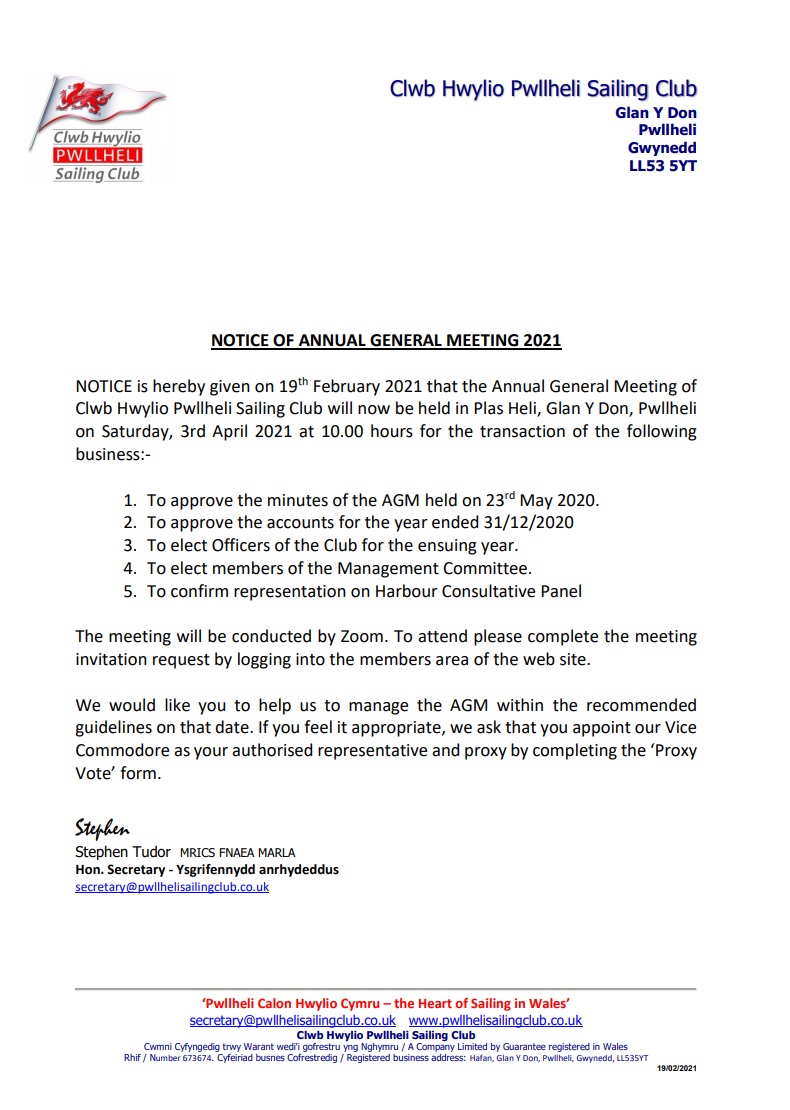
2021 Membership Rates

Membership of CHPSC for 2021
The membership year is from 1st January to 31st December.
2021 Fee Structure
Primary Member - £65
Joint Membership - £115
Racing Skipper - £125
Joint Racing Skipper - £180
Associate Member - £75
Student/Apprentice Member - £30
Youth Member - £20
Dinghy Storage
Small (Optimist/Topper) £55 (£48 early payment)
Medium (Laser) £65 £55 early payment)
Large (Merlin Rocket) £85 (£75 early payment)
Multi Hulls (Dart etc) £95 (£83 early payment)
Road Trailer £50 or £75 for 2 stacked
Box storage trailers under 10 feet £60 (£75 for larger box trailers)
You can purchase a club burgee or pay for your club calendar postage as part of your membership process!
Reasons to be a member in 2021
Pwllheli Sailing Club offers something for everyone, casual boaters, a base for cruising, racing and motor boating together with being a great venue for events, training and importantly a fantastic meeting place, with views, for friends.
In addition to all of the varied activities featured in this e-newsletter (123,700 individual e-mails sent in 2020/21 - see past copies here), membership of the club provides:
- Meeting place for like minded people in a friendly environment
- Affiliated membership of the RYA who safeguard recreational boating in the UK
- Helps to support youth sailing (CHIPAC)
- Training and Development - RYA courses run by club members
- Dinghy and keelboat racing opportunities
- Cruises in company
- Great social events - club members have priority
- Discounted berthing at Plas Heli pontoons,
- Dinghy storage in the refurbished and secure compound
- Access to CHIPAC for members children to learn to sail with experienced instructors teaching in the medium of Welsh and English
- Members can gain RYA qualifications through volunteering experience at club events.
- Advertise your Holiday Accommodation to a target audience of visitors to the area during events (small fee applies)
- Receive regular e-newsletters with useful information
- 10% discount at the bar in Plas Heli
- Easy membership (application/renewal) process all on-line and starting from £65 for the year!
- Racing Skipper membership includes all racing entry fees, except the IRC Champs and the ISORA element of coastal races.
Calendar Collection
2021 Calendars are available for collection - please email
NEW WEBSITE FEATURE
The top menu on the CHPSC website has changed
All Club Sections have been included in one menu 'Club Sections'
Use this menu to get to the section of your choice including the new web site section for 'Dinghy Sailing'
We hope that makes the web site easier to navigate with a less crowded top menu
The mobile menu for your phone also has this feature!
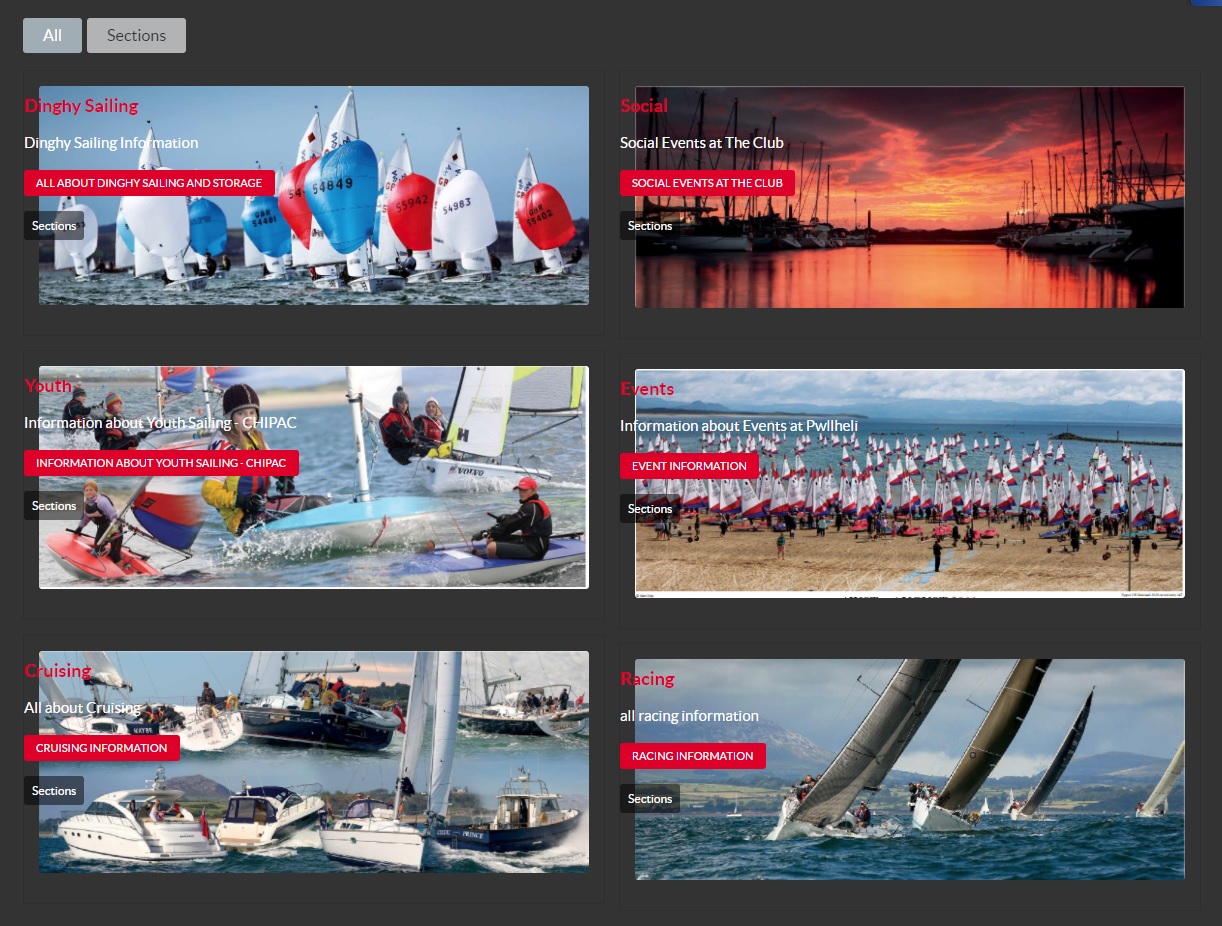
Racing
The 2021 racing programme has been developed by club Racing Captain Vicky Cox, and is published on the website, and the club activity calendar here
Stephen has developed a matrix of course and distance between marks and generally improved the racing resources which can be found on the club website here
The matrix is also reproduced below
Racing and event updates will be confirmed in the Friday newsletter when the applicable restrictions are known - Note - organised racing is not currently allowed under the current Alert 4 restrictions, next review 1st April, however of course, the Commodore Challenge and Tremadog Triangle are available, so a good opportunity to set a time, and we hope to have the marks laid shortly.
Club Racing at CHPSC is arranged under the guidelines of the RYA/RYA Cymru Wales and the latest charter is reproduced below.
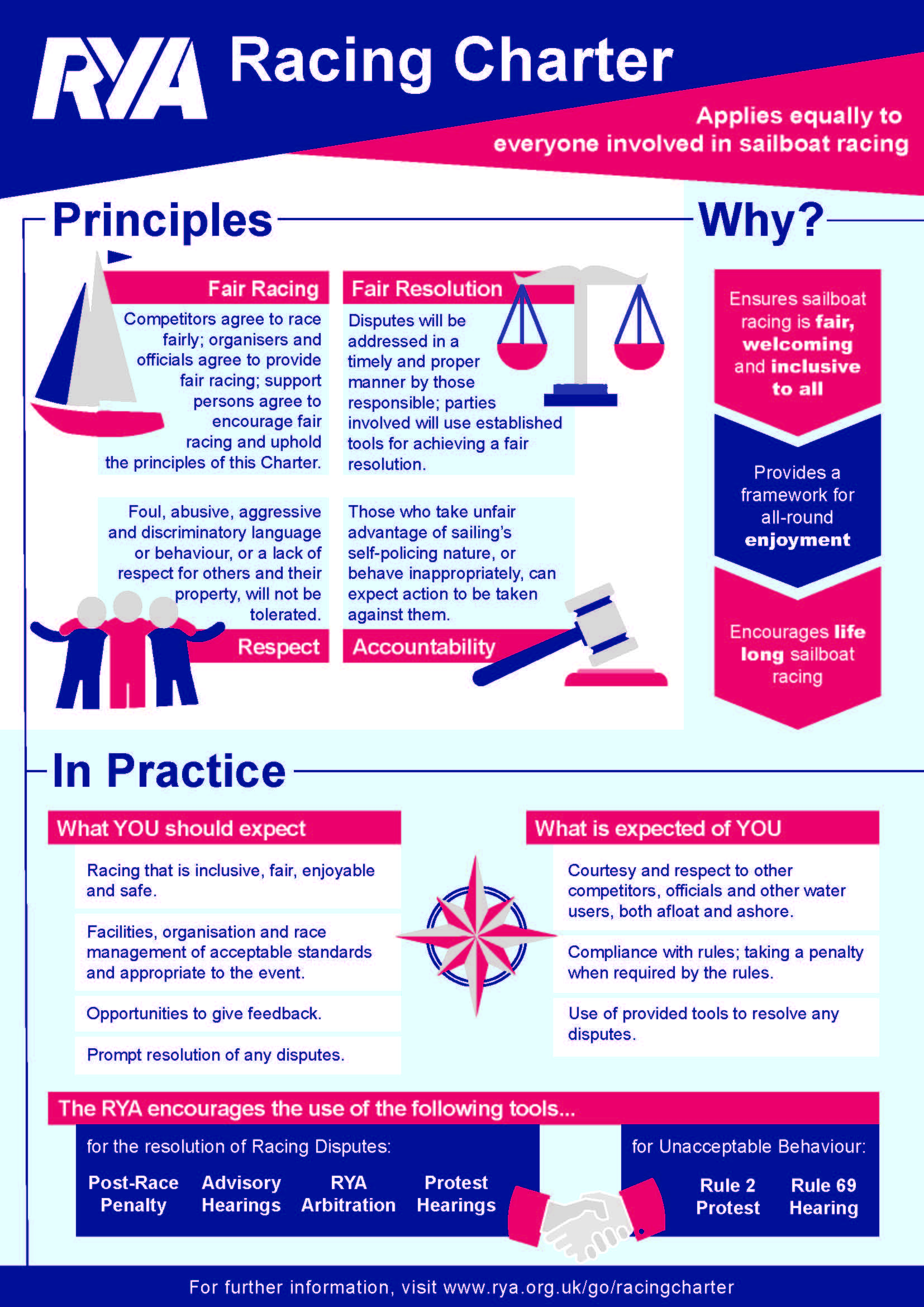
ISORA
ISORA are publishing its 2021 programme today and further information and the race schedule can be found here This includes the six race "Plas Heli Welsh Coastal Series" starting on April 17th .
PLAS HELI
PLAS HELI PONTOON BERTHS
The 2021 season starts on 1st April and the demand for the berths on the Plas Heli pontoons is already exceptional, we anticipate a 100% occupancy this season!
We are extremely grateful for the mammoth effort of our volunteer workforce in carrying out maintenance and preparation works on the pontoons, including the jet-washing of the walkways.
So, we are now all set and ready for the season!
For those who have not yet completed the '2021 on-line application form' (here) we strongly recommend that this is done as soon as possible. Berths will be allocated on a first come basis.
Priority for berths will be given to the customers who commit to a seasonal berth.
We have already moved the versa-dock to provide additional berths on the north side of the main walkway and we are now looking at other options to help with the increased demand especially in the peak season. When these plans have been developed, we will share the information via the CHPSC e-newsletter and on the Plas Heli web site.

The indoor sections of centre are closed in line with Welsh Government Alert Level 4 restrictions, with authorised access now permitted to the pontoons and compound. New opening hours will be posted as soon as restrictions are eased, and our bar and catering partners have assessed what they can offer. In line with Welsh government Covid regulations, we advise the use of the "NHS Covid App" when visiting Plas any of the Plas Heli facilities.
Note: elite RYA squad training is permitted indoors.
In order that the club and centre can open re-promptly, there is some essential maintenance work being undertaken on the infrastructure of Plas Heli and both Plas Heli and CHPSC equipment by the Directors and Flag Officers, in line with Welsh Government Regulations. In addition, a review of the facilities is currently underway to best structure the centre for events, club and community use. Some areas of the centre are hired to local business and local authorities etc, and meeting rooms (for example) can be booked via the Plas Heli website.
As restrictions are eased, we will be looking for additional volunteers to ensure a smooth return to club activities. All voluntary activities will be managed to keep members safe, and all within allowable guidelines.
J24's for sale - expressions of interest
A project is underway to look at the feasibility of replacing the two academy J24's with a lift keel sportboat, to use for race training, club racing and for CHIPAC sailors to transition to keelboats. It will also be available for charter into class events in the UK and Ireland, representing Wales.
The two J24's, with one good quality trailer, yard cradle and a good set of sails are available for sale as a package, please reply to this email if interested, or email
New codes on all gates
Please don’t pass on these numbers. Anyone with a genuine need to access the pontoons, compounds or other gated areas will be provided with the code, combination or key. Email
Track and Trace is a Government requirement, please record your details on the sheet provided at the entrance to the bar, or send an email to

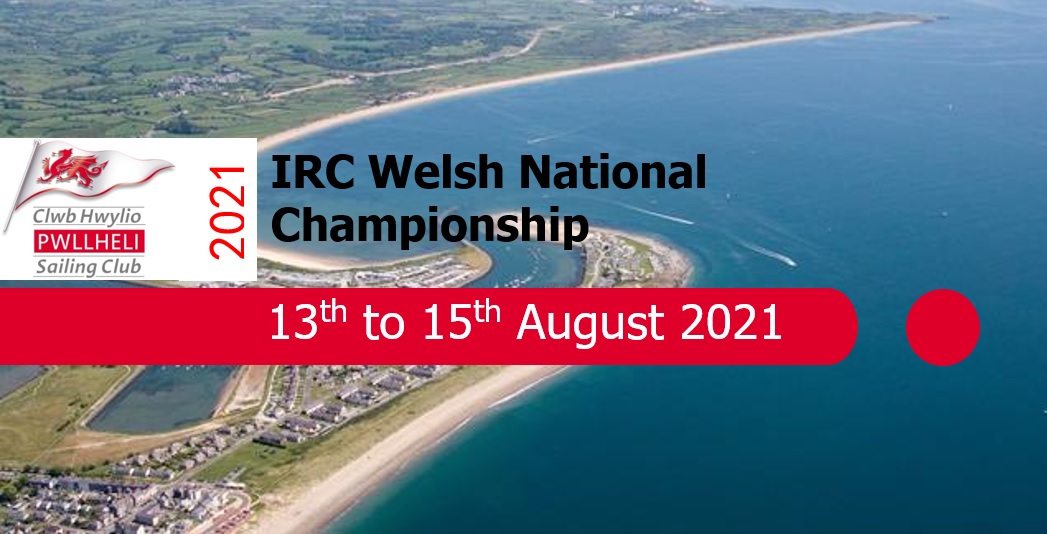

Plas Heli, the Welsh National Sailing Academy and Event Centre, has been awarded the venue rights for the 'IRC Welsh National Championships' for 2021 and 2022. The Championship is hosted by Plas Heli, and organised/managed by CHPSC and the RDYC.
We now are recruiting volunteers for event planning purposes and if you would like to contribute, or have any suggestions to enhance the event, please reply to this newsletter. The first planning meeting was held last week via "zoom" to agree the format of racing and framework to publish the Notice of Race. This is now complete and published with the online entry open at the event website here
Thought for the Day:
"WORRY AND NEGATIVITY ARE A MISUSE OF YOUR IMAGINATION"
For more information, membership links and the latest weather and webcam
go to:
www.pwllhelisailingclub.co.uk
Plas Heli Quayside Parking
The parking area on the Plas Heli Quayside is available for paid up CHPSC members and to authorised pontoon users.
The parking area is accessed through the gate adjacent to the old club building
The code to the gate is changed regularly and can be obtained through the plasheli.org website > Facilities> Parking. For convenience follow this shortcut link here
Fill in the details – put a tick in the box to confirm that you are a CHPSC member (have your 2021 membership number ready)
Then in the payment bit – use ‘I am a paid up CHPSC member and request permit for parking’ - Then Submit
You will then receive an automated return e-mail with instructions
Please make sure the gate is closed and locked at all times and that the padlock is never left open or with the code left on the dial
Note: the members parking area outside Plas Heli is temporarily closed due to some recent anti social behaviour, and will be re-opened at Easter, or when the centre re-opens
youtube
 English (UK)
English (UK) 

